(Page créée avec « "Context video : (2 minutes)" ») |
(Page créée avec « - Present the low-tech and its economical, environmental, social or other interests. ») |
||
| Ligne 207 : | Ligne 207 : | ||
"Context video : (2 minutes)" | "Context video : (2 minutes)" | ||
| − | - | + | - Present the low-tech and its economical, environmental, social or other interests. |
- Présenter un problème auquel répond la low-tech (problème et solution) | - Présenter un problème auquel répond la low-tech (problème et solution) | ||
Version du 28 mars 2018 à 17:54
Description
How to create a video or written how to on the Lab' ?
Introduction
The PDF version (http://lowtechlab.org/wp-content/uploads/2017/02/LE-LAB-Tuto-des-tutos-.pdf) in French so far, is available online.
A low-tech can be an outcome from traditionnal or modern know-hows. It founds its utility in towns, just as well as in the countryside. It can make part of rich and industrialized environments, or in developing countries. We advise you to think about its questions, spread out in three main themes : the need, the accessibility and the respect, in order to know if your project is truly a low-tech.
""THE NEED"" Does the dispositive answers a basic need ? Food, energetic, or hygienic needs, drinkable water access, tools ?
""ACCESSIBILITY"" Is it accessible from financial, technic, and materials point of view ? Is its realization cost affordable for this kind of need ? Does it calls on an artisanal know-how ? Are the ressources, materials and tools, locals or easily available in markets, fablabs or rubbish dump ?
""RESPECT"" Does it respects environment ? Is it energy-friendly, fixable, or an outcome of recycling ? Does it respects local populations ? Is it appropriate with local way of life and culture ?
""BE CAREFUL !"" Avoid to submit a polluting dispositive. Avoid to promote a specific product or material that would not be open-source.
- Remarque : For non-complete low-techs documentations, it is asked to fill up a minimum, the context paragraph, along with the function of the low-tech. You can then share your ideas, experiences on the discussion part of the Lab'.
Étape 1 - The Fabrication Manual
""PREQUISITES""
- Low-tech name (with no prepositions "the, a, etc.", with no verbs as "Create a/an..")
- Brieve description of the Low-Tech in one line
- Technology picture
- Difficulty : Easy, Middle, Hard, Very Hard
- Duration : (min, hour, day, week)
- Cost : (€, $, etc.)
- License : Attribution - Sharing in the same conditions (CC BY-SA) (image 1)
""CONTEXT""
To ask yourself right questions helps to formulate a precise and complete context : How have you been creating this device ? Was it to answer a problem ? Was it for an economic reason ? Was it for a hobby, or to fullfill your curiosity ? What is its added value, its interest ? According to our experience, the integration of the low-tech of the field represents a real problematic. Is your low-tech used on the field ? If yes, how big ? Where ? How has it been integrated (sharing means, integration ways, etc.) ? By who (local initiative, foreign NGO, state, etc.) ? (image 2) Otherwise, how could it be implemented ? By who ? Beyond the necessity, what are the obstacles that could disfavor it (changing in the habits, economic constraints, ergonomic problematics, etc.) ? Furthermore, is a business model possible around the low-tech ? In which way could it improve the life of the ones developing it, dealing it, selling it ? Indeed, local entrepreneurs can beneficiate of low cost commercialization, making local population profit of these low-techs in the same time.
""FUNCTIONING""
1 - Explain how is working the low-tech in the high lines, in order to get a global idea of its functioning. 2 - Detail, then, the different parts composing it. 3 - Join a functioning schematic 4 - It is also possible to cite pros and cons of this technique. (image 3)
""LIST OF FABRICATION STEPS""
List fabrication steps in the form of a summary.
1 - ...
2 - ...
3 - ...
""CONSUMABLE MATERIAL""
List precisely the material, expliciting dimensions (distances, volumes, etc.) if needed. Present, if possible, alternatives in the choice of materials.
1 - ...
2 - ...
3 - ...
""TOOLS""
List precisely needed tools to build the system.
a - ...
b - ...
c - ...
""FABRICATION STEPS""
Put a light and clear title to every steps. List sub-steps as you do for a cooking receipe. A sub-step represents an action.
1 - Drill ...
2 - Melt ...
3 - Nail ...
This also to mention security conditions : wearing of glasses, gloves, ear protectors, etc. If needed, add "*Remarks" or "*Warnings" to underline critical points.
""DIRECTIONS FOR USE & REMARKS"
Add remarks, directives of use, of fabrication.
""NOTES AND REFERENCES""
Share sources in order to let the readers look for additionnal informations.
Example of a step by step how to correctly realized on the Lab' : http://lab.lowtechlab.org/index.php?title=L%27%C3%A9olienne (So far in French)
Étape 2 - The movie making
""1 - Tools""
A camera, a microphone, SD cards, batteries, a tripod. Check before use the state of your tools : SD card with sufficient disk space, battery charged, etc.
""2 - Location of the movie""
Choose where does the action takes place, in order to have a good sound quality and good luminosity:
- Indoor, beware of the lack of light and artificial lights, that will impact your video quality. Think of fridges, clocks as well, that could create parasite sounds. These will be disappointing for the spectator watching your video.
- Outdoor, beware of backlighting and the lack of light. Concerning the sound, the wind is fatal. Protect your microphone and its exposure !
"In both cases:"
- Be careful that no big light pits are in your field of view.
- Avoid too big spaces, the backplane should rather be short.
- Filming during the day is highly recommended. At night, you'll get granulas on your images.
""3 - Positionning of the camera""
In order to know where to place the camera, ask the actor what he's going to do at each step. It is therefore easy to place the camera without being annoyed with his hands. On the workbench should only be present the material used at the precise step. This permits not to be visually polluted.
""4 - Scenes""
"Dissect steps" :
Film one scene per step, if possible.
- Vary short and large scenes to air the video.
- For explicative scenes (explanation of a step, of the context), prefer large scenes.
- For active scenes (filming the action), prefer short scenes.
- It is highly recommended to film two frames per action.
- Head to foot framings are not recommended, prefer middle range frames or short frames. - When someone is speaking, do not "cut his head off" during framing. Let an empty space above him.
- Avoid to place the person right in the center of the frame. Putting him on the side will bring dynamism to your scene.
- Filming static scenes is highly recommended to avoir any shaking.
- Put the camera on a tripod or on something static.
""5 - Focus""
For the focus, check whether the camera is on automatic or manual mode.
- If it is on automatic, well check that the camera is focusing on the action and not on the person head.
- If it is on manual, set the focus on the action before starting to film.
""Example"": "Here, I'm going to melt the white wire on the + pole...". We need here a close plane, we focus on the object to melt, and we check that our hands are not between the object and the camera when we film. ""Be careful"" : For tutos realized with smartphones, the difficulty is to realize static scenes. Put the phone on a stable, static place during the whole sequence.
""6 - Filming in order to edit the video""
- Don't tell yourself that mistakes can be rectified at video editing.
- Avoid to film in black and white or vertically.
- Launching the video recordings, let a dead time before action starts or discussion begins in order to facilitate video editing.
- Make simple rushes for get an easy video edition.
""7 - Content""
The video content will tighly be linked to the written step by step.
"Context video : (2 minutes)"
- Present the low-tech and its economical, environmental, social or other interests.
- Présenter un problème auquel répond la low-tech (problème et solution)
- Ne pas hésiter à partir d’un contexte large à un plus local ou même plus personnel.
- Il est important de choisir avec la personne ce qu’elle va dire. Le plan sera explicatif, donc préférer un plan large.
- Insérer des plans de coupe (d’action) pour que cette partie contexte ne soit pas seulement un monologue face à la caméra. Penser donc également à faire des plans d’action « sur le terrain » qui seront en lien avec le contexte.
Vidéo fabrication : (5-10 minutes)
Se demander quel type de vidéo il est préférable de réaliser. Notamment en ce qui concerne les explications : seront-elles en voix off, en live ou sous forme de sous titre ?
- Faire attention à ce que les mains ne soient pas devant l’action.
- Toujours garder en tête qu’une personne lambda puisse comprendre l’action. Pour cela il peut être intéressant d’expliquer « je fais telle action pour telle raison, avec tel matériel que j’ai récupéré à tel endroit … »
- Ne pas oublier de mentionner les conseils de sécurité.
Découper la fabrication en plusieurs étapes clefs :
- Le Fonctionnement : présenter le principe de fonctionnement de la low-tech
- Le Matériel : matériel et les outils nécessaires à la fabrication
- La Fabrication : bien décortiquer chaque étape, un plan pour une action, et les expliquer de manière précise tout en articulant.
- L’utilisation : plans sur sa mise en situation
- Conseils : Il est possible de finir la vidéo en donnant quelques conseils.
Étape 3 - Le Montage
1 - Dé-rush
Une fois les plans filmés il faut les ranger et les stocker. Dans un fichier, vider la carte SD et regarder les rushs un par un.
- Remarque : reproduire le tableau 1, et le remplir, afin de garder une trace du contenu de chaque rush sans avoir besoin de les regarder plusieurs fois.
2 - Montage
- Remarque : Vous pouvez télécharger un logiciel de montage comme Adobe CC Première Pro, ou encore Movie Maker. Après le dé-rush commence le montage. Sélectionner tous les rushs validés (dans notre cas le rush n°3 et 5). Les disposer dans l’ordre chronologique sur la table de montage. Écouter attentivement la bande son et couper les séquences « inutiles », afin de lisser la vidéo. Comme il est fortement conseillé de réaliser des vidéos courtes, couper le moindre moment de blanc, ceci permettra également de rendre la vidéo plus dynamique.
Dans un second temps, ajuster la luminosité : - En extérieur, la lumière peut être très écrasante. En intérieur, l’image peut prendre une couleur jaune à cause des systèmes d’éclairage, ajuster les tons …
3 - Vidéo contexte
Penser à inclure des plans de coupe : des plans de secours destinés à dissimuler le plan explicatif pour rendre la vidéo dynamique, entre les plan explicatifs, pour rendre la vidéo dynamique. Il est possible avec ces logiciels de couper l’image et garder le son de manière à avoir un plan illustratif avec une voix off.
4 - Vidéo de fabrication
Il peut être intéressant de découper la vidéo en chapitres : fonctionnement, matériel, fabrication, utilisation, et conseils. Penser également à inclure un générique au début et à la fin de la vidéo pour qu’elle soit plus facilement identifiable (ajouter un logo, un site internet, ou une page Facebook, c’est l’occasion de les communiquer). Le générique du début doit au moins contenir le titre de la vidéo, et celui de la fin, les réalisateurs de la technologie et de la vidéo.
Étape 4 - Check List
PAS A PAS ECRIT :
- J’ai réfléchi au contexte de sa fabrication, à son utilisation et à son implantation.
- J’ai compris et réussi à expliquer comment fonctionne la low-tech, j’ai des photos et des schémas pour illustrer.
- J’ai établi la liste des étapes de fabrication
- Le moindre objet qui a été utilisé pour la fabrication est listé.
- J’ai bien décortiqué les étapes de fabrication avec une sous étape par instruction, j’ai pris le soin de mentionner les conseils de sécurité.
- Je me suis mis dans la tête d’un potentiel utilisateur de mon tutoriel et je lui ai donné mes conseils pour sa fabrication et son utilisation.
- J’ai bien pris soin de mentionner mes sources.
LE TOURNAGE :
- J’ai vérifié l’état de mon matériel (caméra, micro, cartes SD vides, batteries pleines)
- J’ai choisi un lieu avec une bonne qualité sonore et lumineuse.
- J’ai pris le soin de demander ce que va faire l’acteur à chaque étape.
- J’ai pensé à varier les plans, filmé un plan par étape et effectué des plans fixes.
- J’ai fait la mise au point sur l’action.
- J’ai bien fait attention à ne pas me dire « ça je le rattraperais au montage » !
- Ce que je filme est étroitement lié au pas à pas écrit.
LE MONTAGE :
- J’ai stocké, rangé, regardé mes rushs un par un, puis j’ai reproduis le tableau 1 pour garder une trace du contenu.
- J’ai téléchargé un logiciel de montage puis déposé tous mes rush validés sur ma table de montage. J’ai écouté attentivement la bande son et coupé les séquences inutiles, j’ai également ajusté la luminosité.
- J’ai pensé à mettre des plans de coupe sur les plans explicatifs.
- J’ai découpé la vidéo en chapitres comme par exemple fonctionnement, matériel, fabrication, utilisation et conseils, et j’ai mis un générique au début et à la fin pour être plus facilement identifiable.
Yes
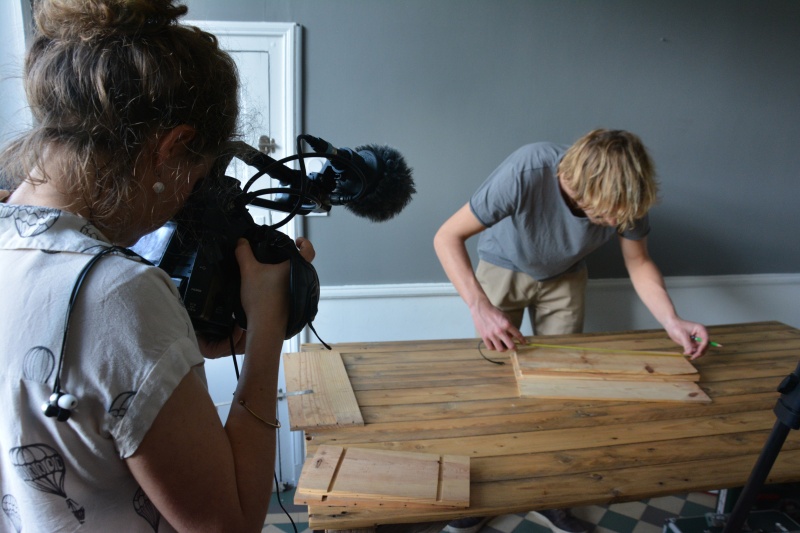
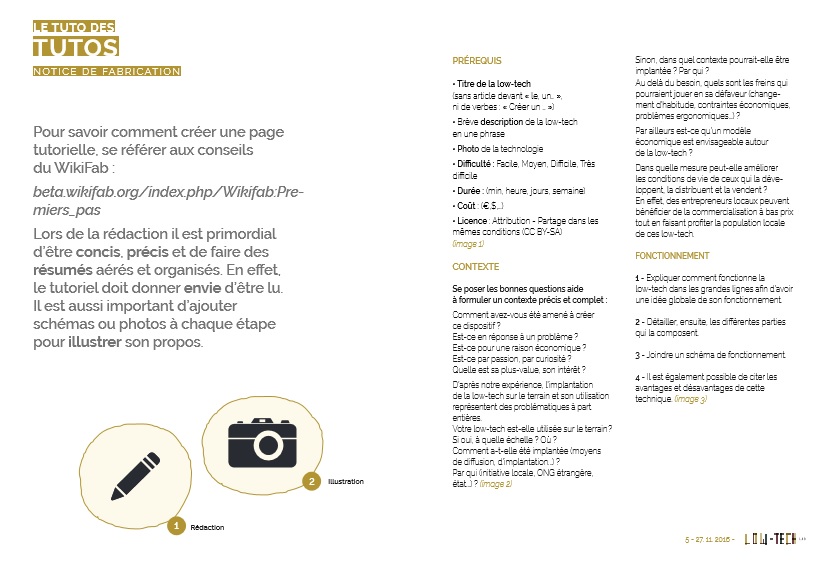
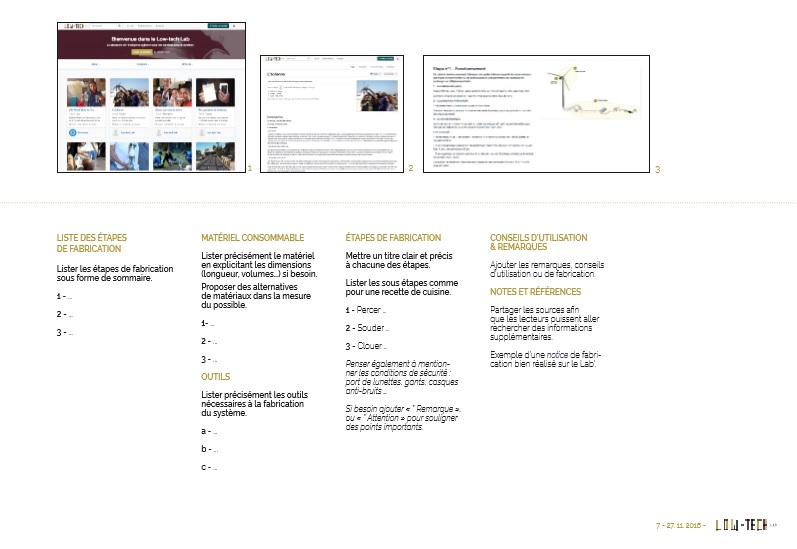
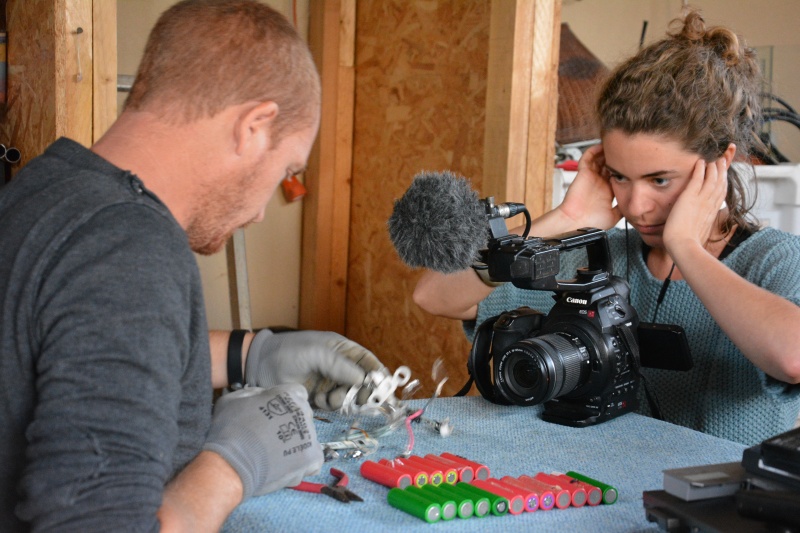
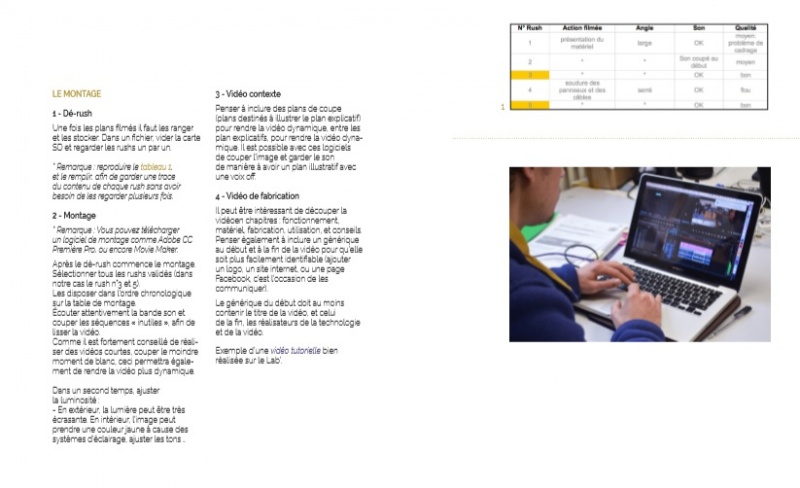
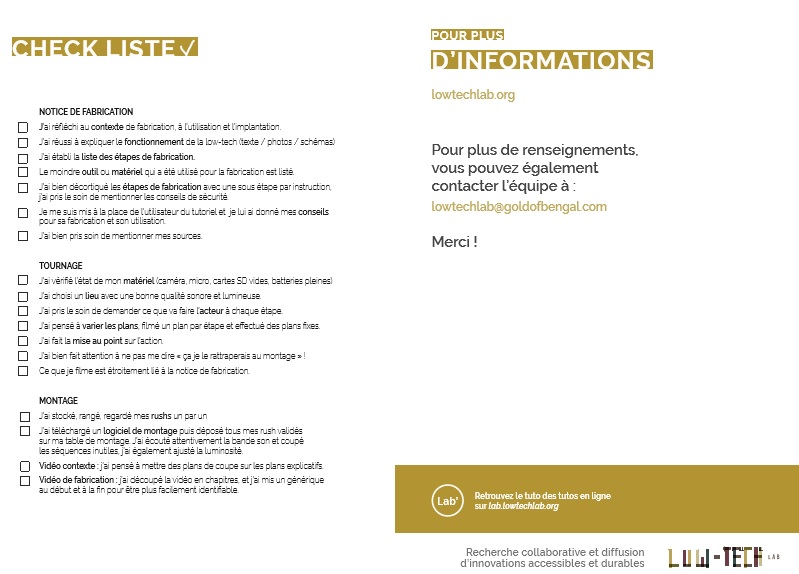
 Français
Français English
English Deutsch
Deutsch Español
Español Italiano
Italiano Português
Português